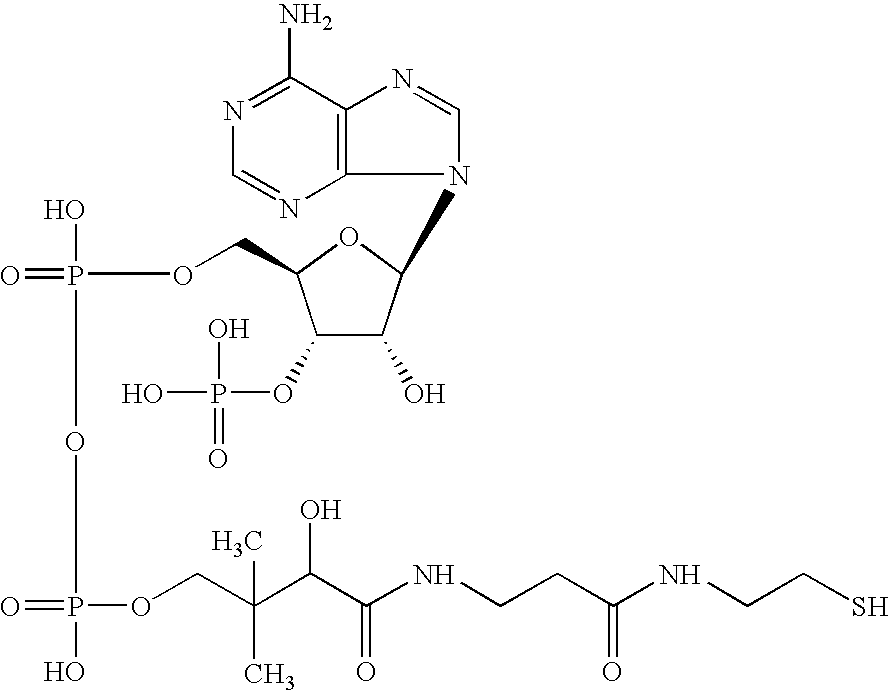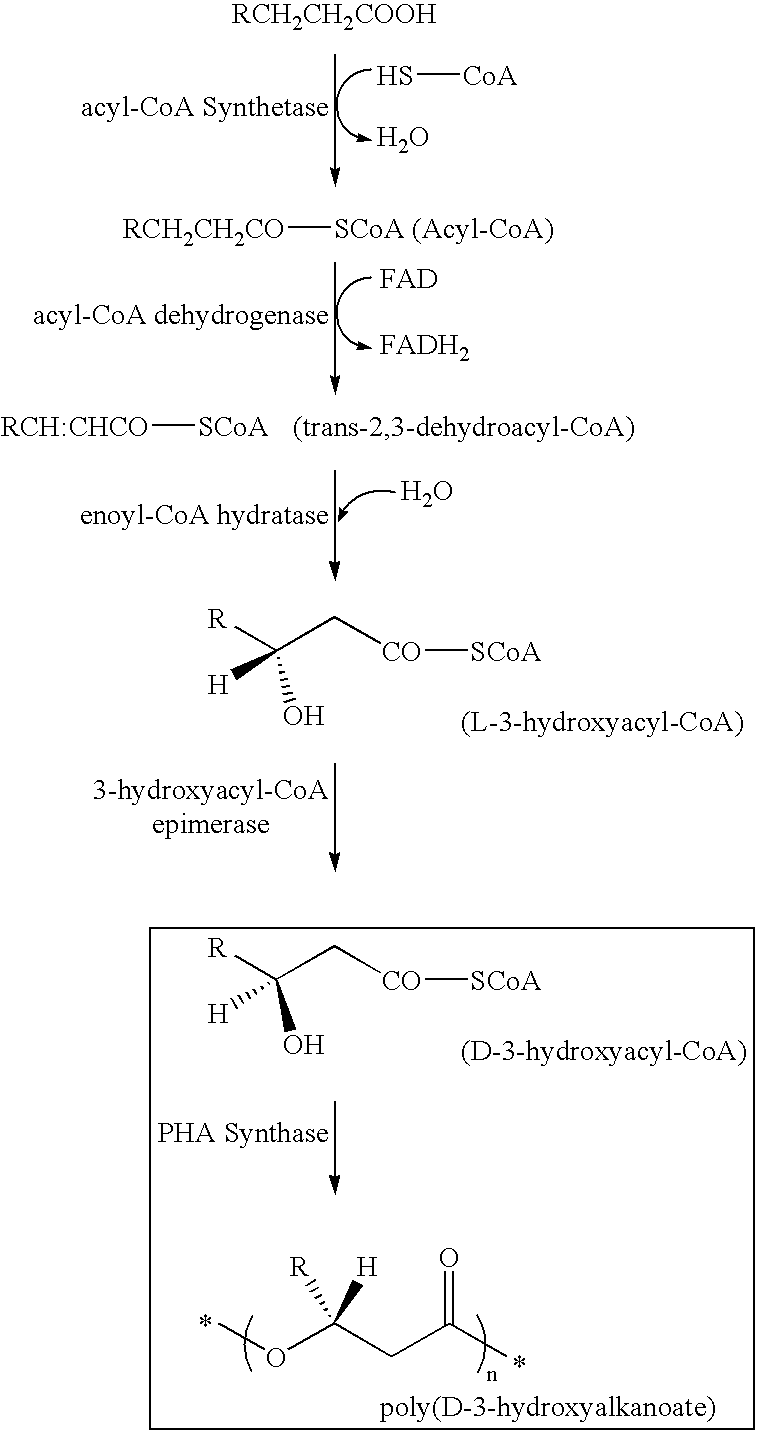Pigment containing ink and production method thereof
a technology of pigment ink and pigment pigment, which is applied in the field of pigment ink, can solve the problems of coagulation deformation of pigment pigment, etc., and achieve the effects of reducing the number of pigment pigments, reducing the number of pigment pigment pigments, and improving pigment pigment pigmentation
- Summary
- Abstract
- Description
- Claims
- Application Information
AI Technical Summary
Benefits of technology
Problems solved by technology
Method used
Image
Examples
reference example 1
Preparation of Transformant Capable of Producing PHA Synthesizing Enzyme, and Production of PHA Synthesizing Enzyme
[0144]A transformant capable of producing the PHA synthesizing enzyme was prepared by the following method.
[0145]The YN2 strain was cultured on 100 ml of LB culture medium (1% polypeptone, 0.5% yeast extract, 0.5% sodium chloride, pH 7.4) at 30° C. overnight, followed by isolating and collecting chromosome DNA using a method by Marmer, et al. The obtained chromosome DNA was fully decomposed with a restriction enzyme Hind III. pUC18 was as a vector and cleaved by the restriction enzyme Hind III. Dephosphorylation of the terminal (Molecular Cloning, 1, 572, (1989); Cold Spring Harbor Laboratory Press.) was carried out, and thereafter DNA Ligation Kit Ver. 11 (Takara Shuzo Co., Ltd.) was used to couple the cleaved site (cloning site) of the vector to the Hind III fully decomposed fragment of the chromosome DNA. A plasmid vector with this chromosome DNA fragment incorporate...
reference example 2
Production of PHA Synthesizing Enzyme 2
[0166]P91, H45, YN2 or P161 strain was plated in the 200 ml of M9 medium containing 0.5% of yeast extract (manufactured by Difco Co., Ltd.) and 0.1% of octanoic acid, and was subjected to shaking culture at 30° C. and 125 strokes / minute. After 24 hours, cells were collected by centrifugation (10,000×g, 4° C., 10 minutes), and were resuspended in 200 ml of 0.1 M Tris HCl buffer (pH 8.0) and subjected to centrifugation again, thereby washing the cells. The cells were resuspended in 2.0 ml of 0.1 M Tris HCl buffer (pH 8.0) and crushed by a supersonic crusher, followed by centrifugation (12,000×g, 4° C., 10 minutes) and collection of a supernatant to obtain a crude enzyme. The result of measuring activity of each crude enzyme is shown in Table 2.
[0167]
TABLE 2ActivityP91 strain0.1 U / mLH45 strain0.2 U / mLYN2 strain0.4 U / mLP161 strain0.2 U / mL
[0168]Each crude enzyme solution was concentrated using a biological solution sample concentrating agent (Mizubu...
reference example 3
Synthesis of 3-hydroxyacyl CoA
[0169](R)-3-hydroxyoctanoyl-CoA was synthesized in accordance with the following procedure, based on the method of Rehm BHA, Kruger N, Steinbuchel A (1998) Journal of Biological Chemistry 273 pp 24044-24051, with the method slightly modified. Acyl-CoA synthetase (manufactured by Sigma Co., Ltd.) was dissolved in a tris hydrochloric buffer solution (50 mM, pH 7.5) containing 2 mM ATP, 5 mM MgCl2, 2 mM CoA and 2 mM (R)-3-hydroxyoctanoate so that the concentration was 0.1 milliunit per microliter. The solution was stored in a hot bat at 37° C., and was sampled at appropriate times to analyze the progress of the reaction by HPLC. Sulfuric acid was added in the sampled reaction solution to make a concentration 0.02 N to stop the enzyme reaction, and thereafter (R)-3-hydroxyoctanoate being an unreacted substrate was extracted with n-heptane and removed. For the analysis by HPLC, using a RP18 column (nucleosil C18, 7 μm, Knauser), elution was conducted with th...
PUM
| Property | Measurement | Unit |
|---|---|---|
| temperature | aaaaa | aaaaa |
| temperature | aaaaa | aaaaa |
| concentration | aaaaa | aaaaa |
Abstract
Description
Claims
Application Information
 Login to View More
Login to View More - R&D
- Intellectual Property
- Life Sciences
- Materials
- Tech Scout
- Unparalleled Data Quality
- Higher Quality Content
- 60% Fewer Hallucinations
Browse by: Latest US Patents, China's latest patents, Technical Efficacy Thesaurus, Application Domain, Technology Topic, Popular Technical Reports.
© 2025 PatSnap. All rights reserved.Legal|Privacy policy|Modern Slavery Act Transparency Statement|Sitemap|About US| Contact US: help@patsnap.com



